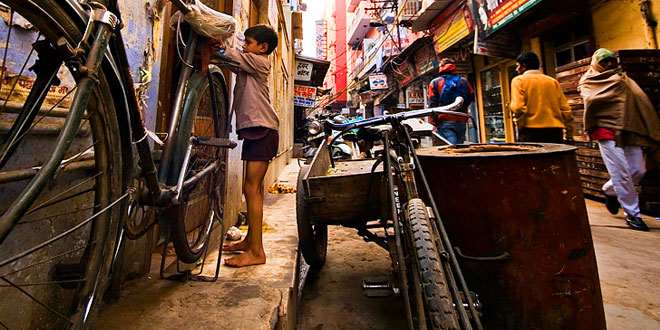Question: How did the development or expansion of Bombay differ from London?
Answer:
- Bombay was overcrowded city where a person had only 9.5 square yard of space whereas it was 155 square yard in London,
- Bombay did not grow according to a plan whereas London grew according to a plan.
Question: When did Bombay become the capital of the Bombay Presidency?
Answer: In 1619, after the Maratha defeat in the Anglo-Maratha war.
Question: When was first cotton mill established in Bombay?
Answer: 1854
Question:Name any two factors which promoted migration into Bombay.
Answer:
- Introduction of railways.
- Establishment or textile industry.
Question:What were chawls?
Answer: Chawls were multi storey-ed structures built Since l860s in the native parts of Bombay. These were largely owned by private landlords who were looking for quick ways of earning money from the anxious migrants. Each chawl was divided into smaller one room tenements which had no private toilets.
Question: “The rapid and unplanned expansion of Bombay led to many problems” – Mention the major problems.
Answer:
- Water crisis
- Crisis of housing
- Lack of space
- Caste and family group dashes
Question: “The policy of racialism was visible In the colonial cities”. Explain by giving examples.
Answer:
- The Bombay fort area was divided between a ‘native town’ where mes o: the Indians lived and a “white section”. where the Europeans lived.
- A European suburb and an. industrial zone developed to the North of the fort area with a similar suburb and cantonment in the South.
Question: When and why was City of Bombay Improvement Trust established?
Answer: The City of Bombay Improvement Trust was established in 1898 for clearing poorer homes out of the City center.
Question: Give reason for the following:
(i) The Kent Act led to housing crisis in Bombay.
(ii) Expansion of the city has always posed a problem in Bombay.
Answer: (1). Because landlords withdrew houses from the market.
(2). Because of scarcity of land.
Question: Who wrote the novel ‘Debganer Martye Aagaman’ (The Gods visit Earth)? What was the plot of the novel? Explain.
Or
Describe in brief how did ‘The city of Calcutta’ both amaze and confuse the Gods.
Answer:
- In his book Durgacharan Ray has written about the visit of Brahma (the creator) and Other Gods to Calcutta.
- As Varuna the Rain God, conducted them around the capital of British India, the gods were wonders Buck by the big. modem city the train itself, the large ships on the river Ganges, rectories belching smoke, bridges and monuments and a dazzling a nay of shops selling a wide range of commodities, iii The gods were so impressed by the marvels of the teeming metropolis that they decided to build a Museum and a High Court in Heaven.
Question: “Three historical processes have shaped modern cities in a decisive way”. Explain.
Answer:
- The rise of industrial capitalism attracted large number of workers to cities.
- The colonial rule over large parts of the world also helped in the development of cites, for example. Indian dries of Calcutta and Bombay developed because of Britishers.
- Development of democratic ideals also played important role in bidding new towns and cities because these cities were needed for administrative purposes.
Question: “Industrialization changed the form of urbanization in the modem period”. Explain.
Or
Describe the role of industrialization in shaping the modem cities in England.
Answer:
- The early industrial cities of Britain such as Leeds and Manchester attracted large number of migrants to the textile mills set up in the late eighteenth century. In 1851, more than three-quarter; of the adults living in Manchester were migrants from rural areas
- London’s doming and footwear, wood and furniture, metals and engineering, priming and stationery, etc. attracted large number or skilled as well as unskilled workers
- The first cotton textile mill in 3om bay was established in 1854. By 1921, there were 85 cotton mills with about 1.46.000 workers. Only about one-fourth of Bombay’s inhabitants between 1851 and 1931 were born in Bombay: the rest came from outside. Large numbers flowed in from the nearby district of Ratnagiri to work in the Bombay mills
 Class Notes NCERT Solutions for CBSE Students
Class Notes NCERT Solutions for CBSE Students





